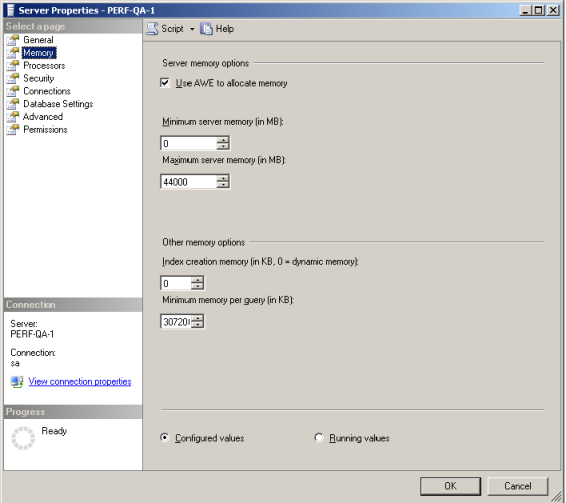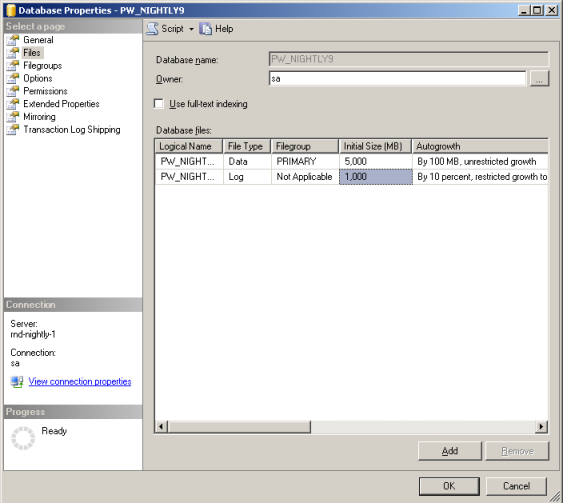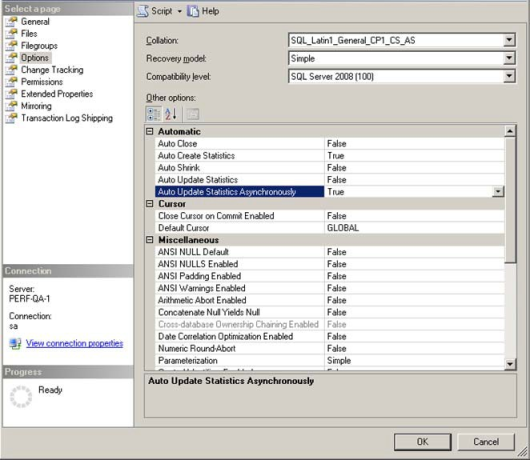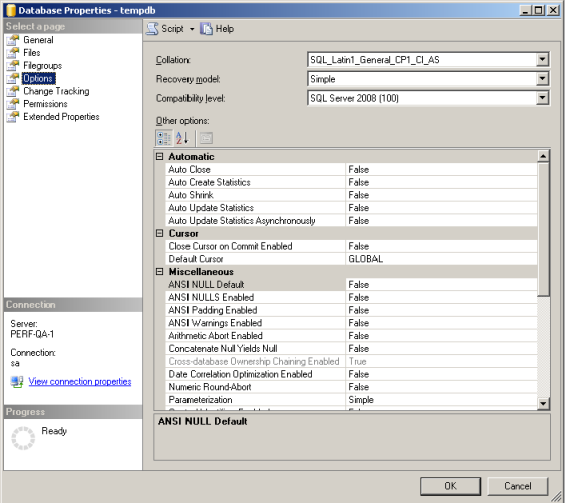This topic includes the following sub-topics:
System configuration requirements for large environments
Precise registry parameters should be set in the <Precise_root>\products\i3fp\registry\products\infrastructure\sts\settings.xml file:
Table 1 Registry parameters in the settings.xml file
| Parameter | Value |
|---|---|
correlation-queue-max-size | 700000000 |
queue-max-size | 200000000 |
backup-max-total-files-size | 3000000000 |
To reserve more space in the backup folder, you can increase the size of the backup-max-total-files-size parameter. This may be useful when your database or PMDB is down or experiences a data load delay.
After changing the above parameters, you need to restart the Precise FocalPoint and Precise Listeners.
In the <Precise_root>\products\i3fp\registry\products\pw\maintain\db-sizes.xml file:
Table 2 Registry parameters in the db-sizes.xml file
| Parameter | Value |
|---|---|
| save-oracle-db-sizes | false |
In the <Precise_root>\products\i3fp\registry\products\insight\focalpoint.xml file:
Table 3 Registry parameters in the focalpoint.xml file
| Parameter | Value |
|---|---|
sts-max-number-of-threads-for-cor relation | 5 |
sts-max-files-in-processor-files-fold er | 50000 |
After changing the above parameters, you need to restart the Insight FocalPoint.
In large environments you have to update the memory configuration for the Precise framework JVMs in the relevant XML files. The following code example indicates where you have to insert the parameter in those files (replace <number> with a number). The <jvm-options> section appears in all files:
The memory configuration for the Precise framework JVMs (XMX configuration) should be as follows:
Table 4 Memory configuration
| Component | Size | Location |
|---|---|---|
Precise FocalPoint | 1024 MB | <Precise_root>\products\i3fp\bin\psin_i3fp_init.xml |
J2EE FocalPoint | 512 MB | <Precise_root>\products\j2ee\bin\psje_focal_init.xml |
PMDB FocalPoint | 768 MB | <Precise_root>\products\pw\bin\pspw_focal_init.xml |
Insight FocalPoint | 2048 MB | <Precise_root>\products\insight\bin\psis_focal_init.xml |
Web FocalPoint | 768 MB | <Precise_root>\products\www\bin\psww_focal_init.xml |
Web Data Loader | 768 MB | <Precise_root>\products\www\bin\psww_dataloader_init.xml |
GUI FocalPoint | 1024 MB | <Precise_root>\products\gui\website\bin\psin_gui_init.xml |
After making changes in size of one or more of the components above, you will need to restart the related component(s).
If you define multiple alerts, you may want to increase the XMX-size of the Alerts FocalPoint and Informpoint.
If you intend to create several reports, you may want to increase the XMX-size of the Report Manager FocalPoint.
The memory configuration for each production server with either J2EE, Web, or .NET should be as follows
Table 5 Memory configuration
| Component | Size | Location |
|---|---|---|
Listener | 356 MB | <Precise_root>\infra\bin\psin_listner_java_init.xml |
After making changes in size of the component above, you will need to restart the related component .
Oracle-based PMDB configuration
This section is divided into information for Oracle 11g and 10g
Oracle 11g
In Oracle 11g the automated maintenance tasks infrastructure known as AutoTask enables Oracle to automatically schedule Automatic Maintenance Tasks. AutoTask schedules automatic maintenance tasks to run in a set of Oracle Scheduler windows known as maintenance windows. Maintenance windows are those windows that are members of the Oracle Scheduler window group MAINTENANCE_WINDOW_GROUP.
Oracle 11g includes three automated database maintenance tasks:
- Automatic Optimizer Statistics Collection - Gathers stale or missing statistics for all schema objects. The task name is
auto optimizer stats collection. - Automatic Segment Advisor - Identifies segments that could be reorganized to save space. The task name is
auto space advisor. Automatic SQL Tuning Advisor - Identifies and attempts to tune high load SQL. The task name is
sql tuning advisor.If you experience performance problems in Precise during the default maintenance times, we recommend to change the maintenance schedules or ask advice from your Oracle DBA.
It is recommended to use a block size of 16 Kbytes.
The following tables describe the Oracle-based PMDB configuration parameters and sizing recommendations that need to be inserted in the init.ora file for Oracle 11g:
Table 6 Oracle 11g-based PMDB configuration parameters
| Parameter | Value |
|---|---|
MEMORY_TARGET | 45 GB |
MEMORY_MAX_TARGET | 45 GB |
LOG_BUFFER | 5 MB |
| SESSIONS | 1500 |
PROCESSES | 1000 |
UNDO_RETENTION | 7200 |
DB_WRITER_PROCESSES | 4 |
Table 7 Oracle 11g-based PMDB sizing recommendation
| Description | Value |
|---|---|
Redo Log | 500 MB for 90 instances 1000 MB for 180 instances 2000 MB for 450 instances |
PMDB Temporary Tablespace | 4 files and each file 32 GB |
Undo Tablespace | 4 files and each file 32 GB |
If on a Linux server you get an ORA-845 error, /dev/shm needs to be mounted with its proper size. The size is directly influenced by the SGA size of your PMDB. If you set it too low you will get this error.
To mount it, log in as a root user and use the following command: # mount -t tmpfs shmfs -o size=<SGA size> /dev/shm
To activate the setting and make it permanent after a restart, add the entry in /etc/fstab.
Oracle 10g
By default Oracle 10g automatically gathers optimizer statistics using a scheduled job called GATHER_STATS_JOB. By default this job runs within a maintenance window between 10 P.M. to 6 A.M. week nights and all day on weekends. The job calls the DBMS_STATS.GATHER_DATABASE_STATS_JOB_PROC internal procedure which gathers statistics for tables with either empty or stale statistics, similar to the DBMS_STATS.GATHER_DATABASE_STATS procedure using the GATHER AUTO option. The main difference is that the internal job prioritizes the work such that tables most urgently requiring statistics updates are processed first.
If you experience performance problems in Precise during the default maintenance times, we recommend to change the maintenance schedules, or ask advice from your Oracle DBA.
It is important to understand that there are two scheduled activities related to the collection of Oracle "statistics". These are very different:
- AWR statistics. Oracle has an automatic method to collect AWR "snapshots" of data that is used to create elapsed-time performance reports.
Optimizer statistics. Oracle has an automatic job to collect statistics to help the optimizer make intelligent decisions about the best access method to fetch the desired rows.
It is recommended to use a block size of 16 Bytes.
The following tables describe the Oracle-based PMDB configuration parameters and sizing recommendations that need to be inserted in the init.ora file for Oracle 10g:
Table 8 Oracle 10g-based PMDB configuration parameters
| Parameter | Value |
|---|---|
SGA_TARGET | 45 GB |
SGA_MAX_TARGET | 45 GB |
LOG_BUFFER | 5 MB |
SESSIONS | 1500 |
| PROCESSES | 1000 |
UNDO_RETENTION | 7200 |
DB_WRITER_PROCESSES | 4 |
Table 9 Oracle 10g-based PMDB sizing recommendation
| Description | Value |
|---|---|
Redo Log | 500 MB for 90 instances 1000 MB for 180 instances 2000 MB for 450 instances |
PMDB Temporary Tablespace | 4 files and each file 32 GB |
Undo tablespace | 4 files and each file 32 GB |
If on a Linux server you get an ORA-845 error, /dev/shm needs to be mounted with its proper size. The size is directly influenced by the SGA size of your PMDB. If you set it too low you will get this error.
To mount it, log in as a root user and use the following command: # mount -t tmpfs shmfs -o size=<SGA size> /dev/shm
To activate the setting and make it permanent after a restart, add the entry in /etc/fstab.
SQL Server-based PMDB configuration
You should place the data and log files on different disks.
The following table describes the SQL Server-based instance configuration parameters as displayed in Figure 1:
Table 10 SQL Server-based instance configuration parameters
| Parameter | Value |
|---|---|
SQL Server memory | 44000 MB |
Minimum memory per query | 307200 KB |
Figure 1 Server Properties with SQL Server-based instance configuration parameters
The following table describes the SQL Server-based PMDB (database) configuration parameters for the files as displayed in Figure 2:
Table 11 SQL Server-based PMDB (database) configuration parameters for the files
| Parameter | Value |
|---|---|
| Data | 5000 MB |
| Log | 1000 MB |
The autogrowth parameter should be 100 MB.
Figure 2 Database Properties with SQL Server-based PMDB (database) configuration parameters for the files
The following table describes the SQL Server-based PMDB (database) configuration parameters for the options as displayed in Figure 3:
Table 12 SQL Server-based PMDB (database) configuration parameters for the options
| Parameter | Value |
|---|---|
Auto Update Statistics | True |
Auto Update Statistics Asynchronously | True |
Auto Create Statistics | On |
Recovery Model | Simple |
Figure 3 Database Properties with SQL Server-based PMDB (database) configuration parameters for the options
The following table describes the SQL Server-based tempdb configuration parameters as displayed in Figure 4:
Table 13 SQL Server-based tempdb configuration parameters
| Parameter | Value |
|---|---|
tempdb Auto Update Statistics | False |
tempdb Auto Update Statistics Asynchronously | False |
tempdb Auto Create Statistics | False |
Figure 4 Database Properties with SQL Server-based tempdb configuration parameters
In our laboratory-tested environments
The following table shows the environments that we tested in our laboratory:
Table 14 Tested environments
| Criteria | Oracle-based PMDB | SQL Server-based PMDB |
|---|---|---|
J2EE instances | 300 | 180 |
Web instances | 150 | 90 |
Total number of instances | 450 | 270 |
| Server platform | Linux 64-bit | Windows 2008 64-bit |
| Processors | Dual quad core CPU X5570 (8 core) | Dual 6 core CPU X5670 (12 core) |
| Physical memory | 68 GB (Oracle SGA - 45 GB) | 60 GB (SQL Server memory - 44 GB) |
Storage for data files | EMC Symmetrix VMAX | Local 15 K SAS disks |
Data files size | 1.5 TB | 1 TB |




